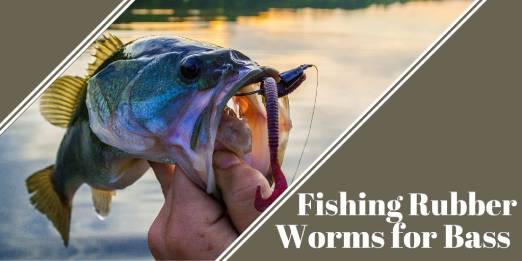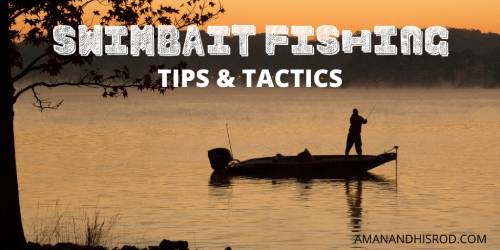Fishing the Texas rig for bass is undoubtedly one of the most common methods of fishing soft plastics. There is no doubt as to why the Texas rig is a downright bass catching machine!
The t-rig has a very specific purpose on the water. Unlike fishing crankbaits, the Texas rig is not used as a search bait. Instead, you’re going to cast, flip, or punch the Texas rig into very specific locations.
Setting up the Texas rig for bass is most of the battle when it comes to being successful with this bass fishing technique. While the bait selection is equally important, the fishing rod, reel, line, weight, and hook make up the other half.
This website is reader supported. Any purchases you make through links on this site earn us a commission at no additional cost to you. Thank you for your support!
Fishing the Texas rig can sometimes be a finesse technique, however more times than not I consider the t-rig a power fishing tactic.
Texas Rig Setup
When learning how to fish the Texas rig for bass, I like to keep it simpler personally. Simple is oftentimes better with this technique.
The Texas rig setup leaves us with a few factors to consider before rigging. Things such as line size, weight, no weight, weight shape, bait selection, and hook selection, will all come into play.
Adding that lure to the right fishing rod and real for the occasion is the formula for success. Let’s break these decisions down a little bit more in the sections to follow.
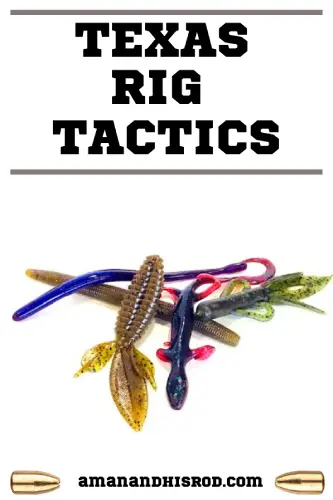
Fishing Rods for Texas Rig
Selecting the right fishing rod for the Texas rig is a matter of opinion…. and you know what they say about opinions. I have been fishing this rig for about 20 years now and I am going to recommend a medium-heavy action rod.
Choose a medium-heavy rod for fishing the Texas rig for two reasons.
- The tip allows for long open water casts
- The stiffness allows you to pull the hook through thick plastic baits into the fish’s mouth.
The one exception to fishing a medium-heavy action rod while using the Texas rig is when you are not casting at all. There are 3 similar situations where I will use a medium-fast action rod paired with the t-rig.
1. Flipping into heavy cover
2. Pitching to dense cove
3. Punching heavy mats.
Here are a couple really good rods for fishing the Texas rig. Both of these rods hardly ever let me down when I set the hook into those bucket mouths.
One is a spinning rod and the other a bait caster. Based on the examples I gave you above, the spinning rod is for open water, and the bait caster is for flipping, pitching, and punching.
G-Loomis E6X 803S JWR Jig and Worm Spinning Rod
Dobyns Rods Fury Series FR 663C Medium Heavy Power Fast Action

Texas Rig Fishing Reels
The reel you choose for your t-rig setup is not as important as the rod. The reason for this is that this technique involves the bait to be moved with the rod more than the reel.
With That being said I want a reel with a low profile. The low profile reel is more comfortable in my hand and allows me to use my finger in from the reel to feel the line.
When using a casting reel you want to have one with some speed. Something like a 7:1 should work just fine. A lot of the time when fishing the t-rig we need to remove the slack line quickly and catch up to the bite.
Something like the SHIMANO Curado 7’1 HG Lowprofile Reel works great. If you have any of the older Shimano Curado reels hang onto them because they are worth their weight in gold.
SHIMANO Curado 70 Baitcasting Reels
When it comes to picking out a spinning reel chances are you already have one that will work for the t-rig. A good all around gear ratio of about 6.2:1 will work just fine.
The Daiwa Exceler LT Spinning Reel is a great affordable choice if you’re in the market for a new spinning reel.
Daiwa Exceler LT Spinning Reel

If you have any questions about reel types or prefer another type of reel, please leave a comment after this post and let me know. I love hearing from my readers.
So we have discussed the preferred rods and reels for the t-rig. Let’s now dive into the fishing line for the Texas rig.
Texas Rig Line Choice
There are three basic types of lines for fishing this rig. We have the ever popular monofilament line, fluorocarbon fishing line, and braid. Each has its own place and I will go over that now.
Mono Fishing Line
The term “mono” refers to a single. A monofilament fishing line is a single strand of nylon fishing line. The monofilament fishing line is by far the most common type of fishing line. Just because it is the most common does not mean that it is the most appropriate for all situations.
Monofilament line has up to 25% more stretch than fluorocarbon lines. This is a benefit when it comes to abrasions from rocks and other debris.
Mono line is also more buoyant by nature. Due to its composition monofilament floats very well.
If you know you are going to be fishing around rock piles, rocky ledges, or other sharper objects, then use monofilament for your Texas rig.
Fluorocarbon Fishing Line
Fluoro fishing line has qualities that are quite different than monofilament line. The fluorocarbon line does not float like its monofilament counterpart. Additionally, the fluoro line does not have the stretch that the monofilament line has. This means that it is less abrasion-resistant.
One of the biggest advantages of a fluorocarbon fishing line is its visibility in the water. These lines are almost invisible in the water. This is due to 2 main factors.
The first reason fluoro has low visibility is that it has the same reflective properties as water. You won’t see the reflection of the line.
The second reason for the low visibility is line diameter. Fluorocarbon line is smaller than mono lines.
Consider using fluorocarbon line while fishing the Texas rig when you are fishing around soft bottom areas. Places that have sandy bottoms, crystal clear water, or small light vegetation are the only time I will use fluorocarbon (in regards to the t-rig).
Braid Fishing Line
Braided fishing line can be a combination of dacron, spectra, or micro-dyneema woven into a single strand of line. Braided fishing line has many advantages. Here is a list of the most common ones.
- Strength – Braided line has far more strength than monofilament or fluorocarbon line.
- Diameter – Anglers can use small diameter braid and still have more strength than the other two previously mentioned lines.
- Casting – Braided fishing line can be cast a tremendous distance.
- Versatility – This line can literally be used in any fishing situation. You can always use a mono or fluoro leader on your braid.
One big disadvantage to using braided fishing line is its visibility. These lines are not clear but instead look more like a strand of small string. Because of this don’t be afraid to use a 3-6 foot leader to help keep fish from getting suspicious.
Texas Rig Weight Size
Now we have our gear selected to this point. It’s time to get into the bread and butter of the Texas rig. All weights are not created equal when it comes to this bass fishing technique. Let’s go over a couple of different styles of weight and when to use them. The only common denominator here is that we are using bullet weights.
Types of Bullet Weights for Texas Rigs
There are many different brands of them but the style we are going to use for the Texas rig is bullet weights. These weights are tapered down at one end creating a bullet like shape.
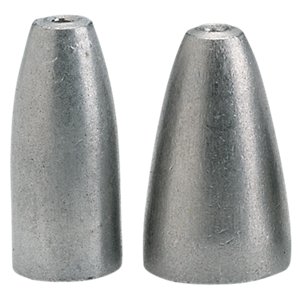
Bullet weights can range is size from 1/32 to 2 ounces or more.
There are 3 main factors to consider when selecting the correct bullet weight for the Texas rig.
1. Fish Depth – When fishing in just a few feet of water it is not always in our best interest to put a 1-ounce weight on and just plunge to the bottom. The fish may be sitting just below the surface. In this case you want to use the smallest weight you can to get through the vegetation but also fall slowly.
2. Vegetation Density – Sometimes you just have to fish for the swamp donkeys. When fishing in the thickest of vegetation you will need a 1-ounce weight or more.
3. Wind Conditions – As with all bass fishing lures that we fish, the wind affects them all. Fishing the Texas rig is no different. The stronger the wind = the bigger the weight.
Bullet Weight Materials
Weights have evolved over time. Fishermen having the creative minds that they do will inevitably come up with new things. There are 4 materials used for bullet weights and they each have a very unique purpose.
- Lead
- Steel
- Tungsten
- Brass
Lead Weights
Lead is the most common type of material used in sinkers. This is because it is readily available and cheap to use. Lead is a good all around choice when choosing a weight for the Texas rig. Lead weights are versatile and effective.
Steel Weights
Steel weights have 2 distinct differences from the rest of the materials. These weights have a much larger profile than the others. One great advantage to steel is that is can be impregnated with scents. Every little bit can make the difference out there and a weight that smells like another fish is okay by me.
Tungsten Weights
Tungsten is going to be the favorite weight of the bass fisherman trying to get through thick cover. This is because tungsten has the smallest profile with the most weight. Tungsten is very heavy compared to the other 3. This means smaller weights punching through heavy vegetation.
Brass Weights
Brass weights have a little secret up their sleeve, they create a very unique sound when bumped off of another hard object. Bouncing along rocks, docks, and gravel will produce a noise the other three materials won’t.
What Size Hook Should I Use?
This is a great question. There are many types of fishing hooks for soft plastics out there. Two things we have to know when selecting a hook are size and style.
Hook Size
Let us first talk about hook size. Soft plastics hooks are generally going to range from 1/0 (smaller) to 10/0 (bigger). The bigger the hook the stronger the wire it is made of.
When fishing open clear water you will want to use the smallest hook possible without compromising the integrity of the hook. Using hooks like a 2/0, 3/0, and 4/0 are going to be ideal.
If you are fishing around submerged wood or piles you may want to step it up to a 4/0 or 5/0 hook.
When fishing in thick matted vegetation I prefer something with some bite to it. I use 5/0 or 6/0 hooks to really pull those fatties out of the cover.
Hook Style
When talking about the style of the hook to use it can get a little bit more complicated. I am going to mention three main styles of hooks and for the purpose of keeping your attention, I will disregard the rest.
The three main types of Texas Rig Hooks
- Straight Shank Hook – Used for flipping, punching, and pitching.
- Offset Hook – Used when fishing worms, creatures, and some craws.
- Offset Wide Gap / Extra Wide Gap – Used when fishing very think baits like large bodied creatures.
If you have any questions about what hooks to use with specific baits, feel free to send me a comment at the bottom of this post and I will get back to you ASAP.
Texas Rig Baits for Bass
When we start talking about Texas rig baits for bass there are so many options to choose from. When selecting the right bait for the job we need to consider a few things first.
How deep are you fishing?
Depth can influence what bait we want to throw on our Texas rig. When fishing deep, clear open water, you are going to want to stick to the low profile baits. I don’t mean you have to use small baits, just a skinny profile.
Are you fishing heavy cover?
Throwing the Texas rig for bass around heavy cover allows us to go outside the norm and try larger baits with wide body profiles (because your using bigger hooks). Big baits are going to help the bass see your setup. The big fish setting up under mats and trees want a big mac sorta meal, not a french fry.
Best Texas Rig Baits
So we have arrived at the point in the article where we get to talk baits. What’s the best Texas rig baits are for me may differ for you. One thing I guarantee though…my Top 5 Texas Rig Baits will work on your waters as well.
The following is a list of the Top 5 Baits for the Texas Rig
- Worm – Green Pumpkin, Watermelon Red Flake, Prizm Shad, Grape
- Senko – Watermelon, Rootbeer, Purple w/Red Flake, Motor Oil
- Craw – Green Pumpkin, Motor Oil, Brown w/Black Flake
- Creature – Watermelon Red Flake, Green Pumpkin, Pumpkin Seed
- Lizard – Grape, Watermelon, Mossy Oak, Rootbeer, Pumpkin Seed
How to Fish a Texas Rig Worm
If you choose to fish a Texas rigged worm you will not be disappointed. I like to use an EWG hook for my worms. I find myself fishing the Texas rig worm more than any other bait.
Choose the spot you intend to fish whether it be a ledge, cut, point, or isolated tree. Make sure to cast past your target a good 5-10 feet (more if you’re in a boat fishing points).
Let your bait sink to the bottom and wait for a bite. A lot of times the Texas rig gets hit as soon as it hits the bottom if not before then.
Start your retrieve with the rod tip at the 3 o’clock position. Slowly raise your rod tip until you reach the 11 o’clock position. Pause there before slowly reeling up your slack and returning the rod to 3 o’clock.
Going below 3 o’clock and past 11 o’clock will leave you in a position to not properly set the hook if a bass bites.
Repeat this method until the bait is back to the boat or the shore where you are standing.

Texas Rig Senko
Now note that my picture may show something different but very rarely am I going to fish a senko with a bullet weight. There are many ways to fish a senko, but by far the favorite is weightless.
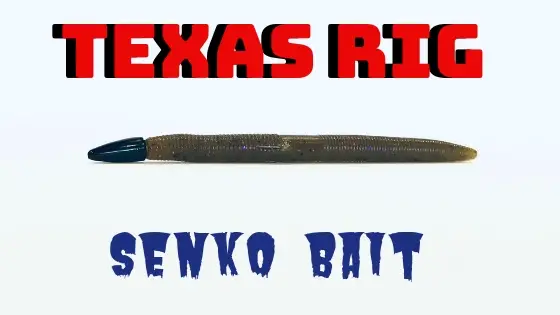
Here is how to Texas Rig a Senko
- Insert the hook into the top of the senko
- Run the hook through the middle of the bait for about half an inch
- Poke the hook through the bottom of the senko
- Push the senko up the EWG shank until the part you just hooked is at the eyelet of the hook.
- Let the bait dangle in position. Take note of where the shank of the hook bends in comparison to the bait. That is the point where we are going to penetrate senko next.
- Push the hook through the bottom of the bait until the point comes out of the top.
- Straighten out the bait so it looks nice and clean.
- Stick the pointed part of the hook just back into the bait. This will allow it to be weedless yet still penetrate the fishes mouth.
When you are finished you should have something similar to the picture below (with or without the bullet weight).
When you’re all rigged up the senko is as weedless as they come. Don’t be afraid to throw the senko into trees, brush, grass, or bounce it off the bottom.
These baits have been known to catch some monster bass! Be attentive, watch your line for bites, and hang on!
Texas Rig Crawfish
If you are wonder which one of these 5 Texas rig baits has the ability to catch monster fish after monster fish then look no further. Crawfish baits have come alive over the last decade.
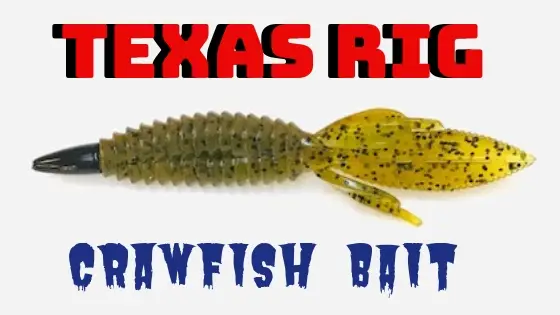
Baits such as the Yum Crawbug, Strike King Rage Tale Craw, or the Berkley PowerBait Chigger Craw, are at the top of the industry.
This style of baits is ideal for heavy, thick, chunky, matted conditions. Flipping, pitching, and punching your way to the fish is how I want to use my craws.
As we stated earlier in the article if you are utilizing any of these techniques it generally going to require heavier weights. I like to use 1/2 ounce to 1-ounce tungsten.
Don’t forget to use a straight shank hook when using these craw style soft plastic baits. The straight shank hook allows the bait to stand up real tall under the water. This will make your bait a lot more visible to the bass.
Berkley Powerbait Chigger Craw
Texas Rig Creature Baits
Next we’re off to the iconic creature bait of the bass fishing world. The creature bait is what I call the utility bait. As my nickname implies this little guy can be fished almost anywhere.
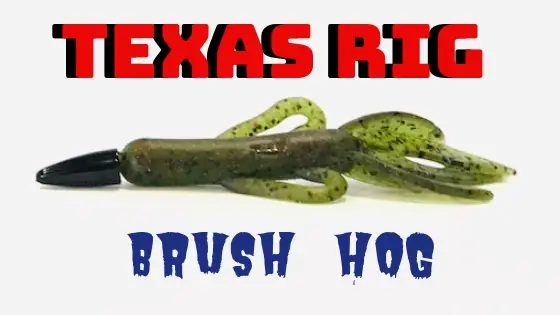
I have caught fish using the creature baits in open water, tight to cover, and up under docks.
Rigging of the creature bait will depend on the situation at hand. As always we are going to use as little weight as possible.
Use an EWG hook when fishing the creature bait on a Texas rig in open water. This is the preferred hook choice when you’re going to use the drag method.
If you going to pitch the creature baits on a Texas rig then you will want to use the straight shank hook instead. Again, this will allow your soft plastic bait to stand upright while on the bottom.
When it comes to selecting the right creature bait, Zoom really has the market locked down in my opinion. Baits like the Brush Hog and the Super Hog are my go to.
Texas Rig Lizard
Although the lizard is a very popular bait it seems to have lost its popularity as of late. To this day when the bite gets really tough and nothing else seems to be working, I can trust in a Texas rigged lizard.

I especially love to fish these baits around submerged wood and trees. There’s something majestic about fishing a lizard around wood.
I also like a slow rate of fall on my lizard baits when Texas rigging. That slow flutter down through the brush falls right into the jaws of largemouth bass.
The other time I switch to the lizard is in the dead of winter. I will find a 4-inch ZOOM lizard that is almost transparent for my clear water lakes here in California. Make a long cast using fluorocarbon line and try your best not to move that bait.
Just when you think you want to lift your rod tip up, don’t! In the dead of winter fish the Texas rig lizard low and slow.
A Video Tutorial of the Texas Rig
Here is a short but informative video on the Texas rig from TacticalBassin’s YouTube channel. These guys have some really good content out there and do a killer job at explaining things.
Conclusion – Texas Rigging for Bass
Well folks we’ve come to the end of this article. We have covered what a Texas rig is, the equipment you need, Types of weights, hooks, and my top 5 baits.
I have even added the basics of fishing the Texas rig.
If you have enjoyed reading this article please share them on your favorite social media platform. Just click the social icons anywhere on this page.
Comment below if you have any questions. I would love to hear from you, what your favorite baits are, or your favorite place to throw the Texas rig.
If you want more great content about fishing soft plastics you can click the link and go straight to another in-depth guide.
Click any of the product links in this blog post to purchase or check the price. I do get a small commission if you click through my site and every little bit helps keep the content coming.
Tight Lines!










